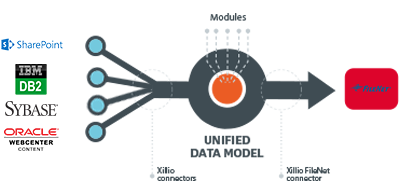8 Challenges When Migrating a Legacy ECM
At Xillio, we have seen firsthand how digital transformation continues to accelerate the need for legacy ECM migrations. With nearly two decades of expertise, our team has been at the forefront of countless content migration projects spanning industries and continents. Trusted by leading enterprises since our founding - we understand the real-world roadblocks organizations face when transitioning from legacy ECM environments to modern platforms. In this blog, Sjoerd Alkema, Xillio's Chief Growth Officer, highlights some of the most significant challenges we consistently encounter.

1. No API available
When there is no API available for the source system, then it might seem difficult to correctly connect to that system to retrieve documents and metadata in the right way. For legacy systems, Xillio has developed a robust suite of connectors that enable direct database integration, effectively overcoming this barrier and ensuring reliable access to both documents and metadata.
Old or unknown databases can have challenging relational structures. In order to migrate this and its content to a new environment, it is necessary to restructure the database to map the new data model. This is complex, but doable. If needed, Xillio can even use the front-end to scrape the data and use this to determine migration logic as well.
3. Limited support from the vendorThe vendor of your current content management system is probably not very excited that you have chosen to migrate away and prefer software from a competitor. Sometimes the vendor is not willing or able to give insights into how the legacy system is set up. An example is the encryption of the files on the file server. We encountered those and used re-engineering of this encryption to map the files to the right record.
4. No supportIn case there is no longer a vendor that supports the extremely old legacy system and there is no documentation available, then we can do this in 3 different ways. Trial and error on an existing API (assuming it is not documented), or use the database and re-engineer the data to the actual values, or even use front-end scraping techniques. Or even a combination of all.
5. Restructuring the old structureThis can be a big challenge in older systems that are still based on folder thinking. To be able to restructure the old structure of your legacy system to map the new environment, you will need to build complex mappings. This is something that you don’t want to do yourself or by hand, but you want to solve in an automated way.
6. PerformanceWorrying about the performance of your old system, because it runs on an old environment, and there is a large amount of content? Then, you will probably have to think about federated migration, so you can start with the new and migrate slowly. Luckily, Xillio supports federated migration using migration and integration.
7. Retention policiesMany legacy systems originate from a compliance reason, for instance, it was needed to store documents under retention policies. These old implementations are very well thought through, and mapping this to new systems (functionality mapping) can be a challenge.
8. Knowledge of configurationOlder systems are often maintained by individuals who may have since retired or moved on, leaving current teams without firsthand knowledge of the system’s configuration. This knowledge gap can create significant hurdles during migration projects. To gain insight into the content that is in the system, Xillio runs its content analysis software.
There are many valid reasons why organizations may delay content migrations—complexity, uncertainty, or lack of internal knowledge among them. However, after years of leading successful migrations, our experience at Xillio has proven that every challenge has a solution. When you engage content migration experts, you gain access to proven strategies and tailored workarounds designed to resolve even the toughest obstacles unique to your situation.
Get in touch today to learn more.
-----------------------------------------------------------------------
Share this
You May Also Like
These Related Stories

How Digital Transformation is Speeding Up Legacy ECM Migrations

Data and content consolidation into IBM FileNet P8


No Comments Yet
Let us know what you think